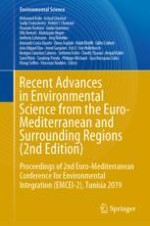2021 | OriginalPaper | Buchkapitel
Insights into Nematode Biocontrol Potential Through Biological and Proteomics Analysis of the Fungus Trichoderma viride
verfasst von : Lobna Hajji-Hedfi, Emna Ben Khaled, Suzana Cobacho Arcos, Lee Robertson, Sergio Ciordia, María Rosa Gonzalez, Najet Horrigue-Raouani, Alfonso Navas
Erschienen in: Recent Advances in Environmental Science from the Euro-Mediterranean and Surrounding Regions (2nd Edition)
Aktivieren Sie unsere intelligente Suche, um passende Fachinhalte oder Patente zu finden.
Wählen Sie Textabschnitte aus um mit Künstlicher Intelligenz passenden Patente zu finden. powered by
Markieren Sie Textabschnitte, um KI-gestützt weitere passende Inhalte zu finden. powered by
